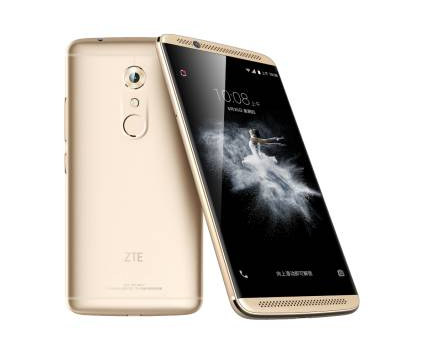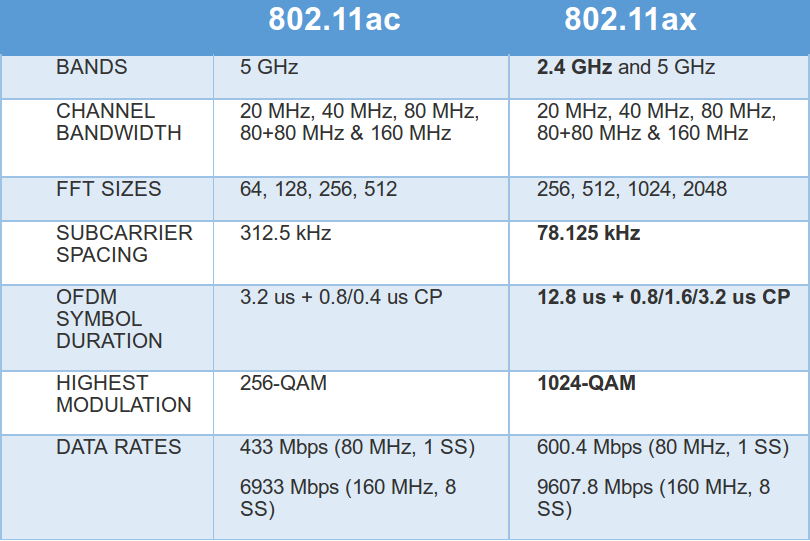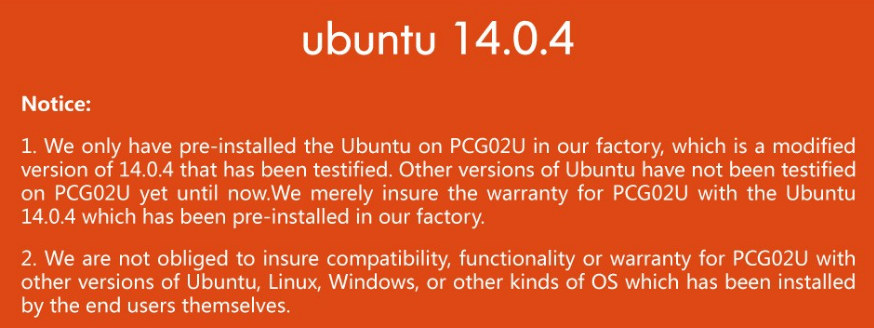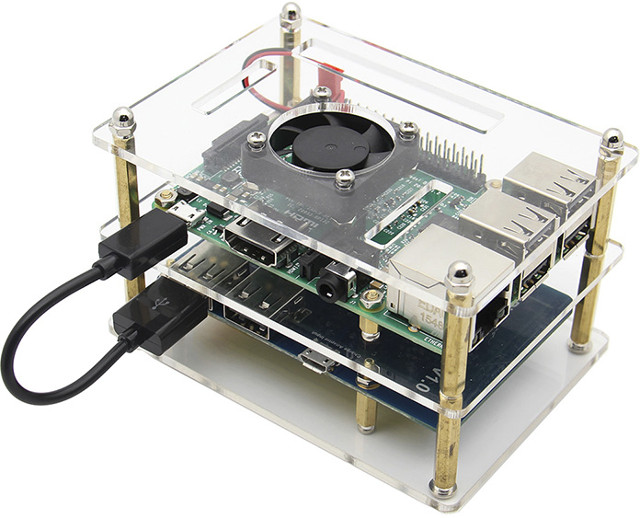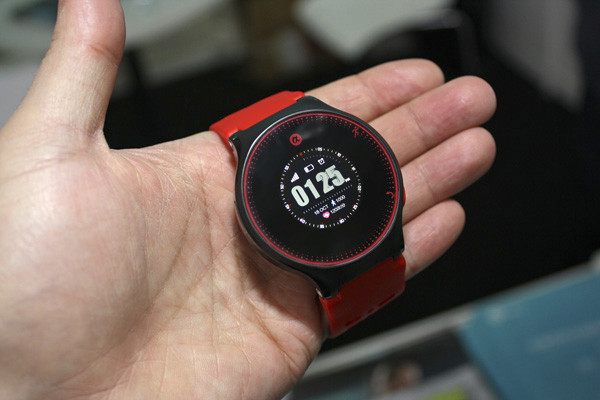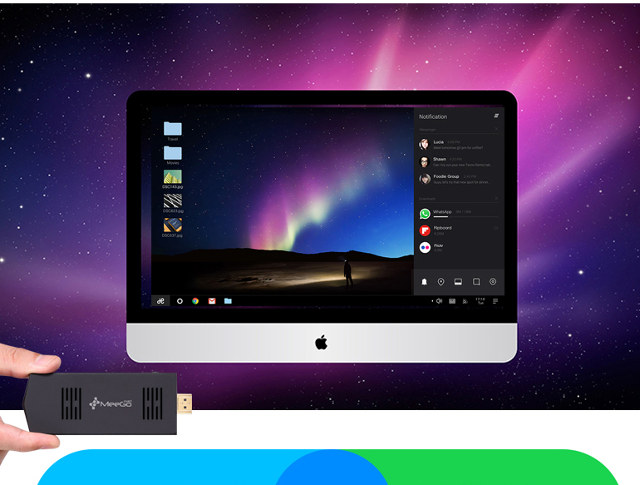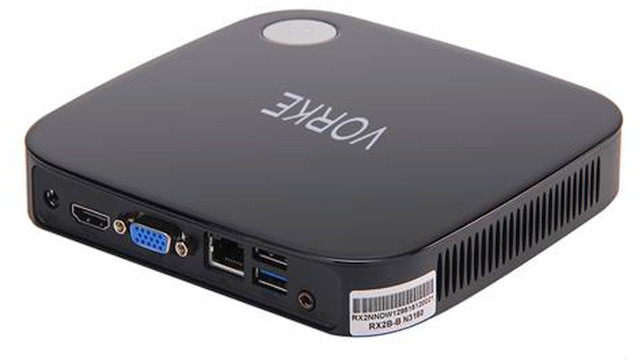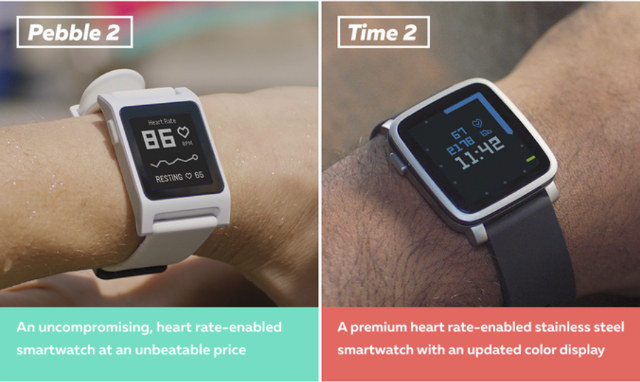Google announced Daydream virtual reality platform at Google I/O 2016 a few days ago, and now ZTE has announced the first phone compatible with Daydream, namely Axon 7 powered by Qualcomm Snapdragon 820 processor with 4 to 6 GB RAM, and 64 to 128 GB flash. Their will be three versions of the phone: basic, standard and premium editions with the following key features and hardware specifications: SoC – Qualcomm Snapdragon 820 quad core ARMv8 processor with two “Gold” cores up to 2.15 GHz, two “Silver” cores up to 1.6 GHz, Adreno 530 GPU with support for OpenGL ES 3.2, OpenCL 2.0, and Vulkan, and Hexagon 680 DSP @ up to 825 MHz System Memory and Storage 4GB RAM, 64GB flash, and micro SD slot up to 128GB OR 6GB RAM, 128GB flash, and micro SD slot up to 128GB Display – 5.5″ 2560 x 1440, WQHD AMOLED, 2.5D; Premium: […]
802.11ax WiFi Aims to Deliver Higher Throughput (Up to 10 Gbps), Better Handle High Density Scenarios
802.11ax WiFi, also known as High-Efficiency Wireless (HEW), aims to improve the average throughput per user by a factor of at least 4 times in dense user environments, with a total bandwidth of 10 Gbps over 2.4 and 5.0 GHz . The new standard is still work in progress and is expected to be published in 2019. 802.11ax WiFi key features include: Backwards compatible with 802.11a/b/g/n/ac Increase 4x the average throughput per user in high-density scenarios, such as train stations, airports and stadiums. Data rates and channel widths similar to 802.11ac, with the exception of new Modulation and Coding Sets (MCS 10 and 11) with 1024-QAM. Specified for downlink and uplink multi-user operation by means of MU-MIMO and Orthogonal Frequency Division Multiple Access (OFDMA) technology. Larger OFDM FFT sizes (4x larger), narrower subcarrier spacing (4x closer), and longer symbol time (4x) for improved robustness and performance in multipath fading environments […]
Updating Star Cloud PCG02U to Ubuntu 16.04 with WiFi and HDMI Audio Support
I completed my review of PCG02U Ubuntu TV stick a few days ago, and I was quite satisfied with the device, but since Ubuntu 16.04 was released last month, I thought it might be fun to upgrade to the latest version of Ubuntu. I’m go through the complete steps including building a new kernel for HDMI audio, and the drivers for WiFi, but you should be able to install Ubuntu 16.04 for Bay Trail and Cherry Trail processor with the image made by Linuxium and a USB stick. Star Cloud PCG02U OS Support and Warranty Before I go through the instructions, you may want to read the conditions on MeLE’s Aliexpress PCG02U page. They meant Ubuntu 14.04 instead of 14.0.4, but the important part is that if something goes wrong trying alternative OS, you may lose your warranty. Upgrade Ubuntu 14.04 to Ubuntu 16.04 Upgrading from one LTS version to […]
Enclosure & Battery Kit for Raspberry Pi Boards Sells for $22
The easiest solution to power Raspberry Pi boards from batteries is to use a USB power bank, and if you want a neater solution, PiJuice HAT board is quite nice, but for something a little cheaper and available right now, Geekworm’s RPi PowerPack kit could be an interesting option with an acrylic enclosure, a battery board with a 3,800 mAh Lithium battery, a fan, three heatsinks, as well as a micro USB to USB cable. Key features of RPi PowerPack board: 3,800 mAh Lithium battery good for around 9 hours on the Raspberry Pi 3. Output current – 1.8A Output voltage: 5.1V ± 0.1V USB – 2x USB output port Standard charging current / voltage – 1.0A/5.0V via 1x micro USB port. Misc – On/Off switch (The battery still charges in off position) The kit with the 3,800 mAh battery is sold for $22.43 on DealExtreme.
Shenzhen Alpha M009 Smartwatch is Powered by Mediatek MT2503 SoC with Integrated Bluetooth, GSM Modem, and GPS
Mediatek MT2502 “Aster” SoC for wearables and IoT was released in 2014 with an ARM7 MCU, built-in Bluetooth, PMIC, and GSM/GPRS modem, and support for external WiFi and GPS chips. The upcoming MT2503 integrates functionality even further as GPS is now embedded inside the SoC, and Shenzhen Alpha Telecom Technology demonstrated their M009 smartwatch based on the latest Mediatek SoC at CES Asia 2016 in Shanghai. M009 smartwatch specifications: SoC – Mediatek MT2503 ARM7 processor with GSM/GPRS modem, Bluetooth 3.0 + EDR 2.1, GPS (MT3333), PMIC Display – 1.22″ or 1.3″ 240×240 resolution TFT display Cellular Connectivity – SIM card Sensors – HRM, pressure sensor Misc – 2x buttons Dimensions – 36 x 32 x 11 mm There will be two version of the processor MT2503A and MT2503D with the former supporting external serial flash. If you’d like to integrate a ready to use module in your design, ATS Link provides […]
MeegoPad A02 Octa-Core Remix OS TV Stick Sells for $30 and Up (in China)
After tablets, mini PCs, laptops, and All-in-one PCs, Remix OS is getting on yet another form factor with MeegoPad A02 TV stick powered by Allwinner A83T octa-core Cortex A7 processor with 1 or 2GB RAM, 16 or 32 GB storage. MeegoPad A02 specifications: SoC – Allwinner A83T octa-core ARM Cortex-A7 @ 2.0 GHz with PowerVR SGX544MP1 GPU System Memory – 1GB or 2GB DDR3L Storage – 16GB or 32GB eMMC flash, micro SD slot up to 128GB Video Output – HDMI up to 4K resolution Audio Output – HDMI, 3,5 mm headphone jack Connetivity – 802.11 b/g/n WiFi and Bluetooth 4.0 USB – 2x USB 2.0 host ports, 1x micro USB port for power Misc – Power button Power Supply – 5V/2A via micro USB Dimensions – 110 x 43 x 9.9 mm Weight – 50 grams The device runs Remix OS 2.0 based on Android 5.1 with desktop optimizations […]
Vorke V1 mini PC Features Intel Celeron J3160 Processor, 4GB RAM, a 64GB SSD, and Supports 2.5″ SATA Drives
Vorke V1 is a Windows 10 mini PC powered by Intel Celeron J3160 quad core “Braswell” processor with 4GB RAM, 64 GB internal storage, and support for an internal 2.5″ SATA drive, as well as support for dual monitor setups thanks to VGA and HDMI ports. Vorke V1 specifications: SoC – Intel Celeron J3160 quad core processor @ 1.6/2.24 GHz with Intel HD 400 graphics GPU @ 320/700MHz – 6W TDP System Memory – 4GB DDR3L alledgedly upgradeable to 8GB, so it must be using SO-DIMM memory (TBC) Storage – 64GB internal storage + 2.5″ SATA drive support + micro SD slot Video Output – HDMI 1.4b and VGA Audio Output – HDMI and 3.5mm headphone jack; ALC269 audio codec Connectivity – Gigabit Ethernet, 802.11 b/g/n/ac WiFi and Bluetooth 4.0 USB – 2x USB 2.0 ports, 2x USB 3.0 ports Misc – Power button & LED, IR receiver. Power Supply […]
Pebble 2 & Time 2 Smartwatches, and Pebble Core for Runners and Hackers Launched on Kickstarter
Pebble launched one of the first smartwatches in 2012, and is now one of the most famous name for wearables. The company has now launched another crowdfunding campaign for three wearables: Pebble 2 & Time 2 watches, and Pebble Core which can be either be used as a fitness tracker for runner, or by hardware hacker to play with IoT apps. Pebble 2 and Time 2 can receive notifications from your Android or iOS smartphone, include a built-in HRM for activity tracking, and a microphone for voice record and SMS, and are waterproof of up to 30 meters. To me the two key features of Pebble wearables are always-on displays, and long battery life, and the two new watches have a black & white (Pebble 2) or color (Time 2) always-on display, and up to one week of battery life for Pebble 2, and 10 days for Time 2. Pebble […]


